Why do plants have hairs?
As we walk along a trail, we can observe the diverse world around us: trees, flowers, birds, reptiles, rocks, clouds. What an amazing world it is: colors, sounds, textures, smells. But there is another amazing world not easily seen by the human eye, a microscopic world. A glimpse at that world is seen through the microscope or magnifying glass. A weed in your garden, which you gleefully pull up and put under the microscope, may turn out to be quite beautiful and unique.
At the Nature Center, we are fortunate to have a digital microscope that can magnify all sorts of objects, including plants. The leaves, stems, or flowers of a plant, magnified, may prove to be smooth (glabrous) or hairy. You may see glandular hairs, star-shaped hairs, long hairs, short hairs, matted hairs, twisted or knobby hairs, etc. There are over 30 different ways to describe the hairs on a plant!
So what purposes do hairs serve for the plant?
Thick and matted hairs can trap air against the plant surface, which helps maintain moisture and temperature. Hairs can reflect or absorb sunlight, depending on the ecosystem the plant is growing in. In areas of low humidity hairs will help the plant maintain water, preventing desiccation; in a more humid climate hairs may prevent water absorption.
Hairs may prevent predation. Some insects prefer plants that are hairless; a mouthful of hairs is not very tasty. A caterpillar may resist eating a plant with stiff hairs and a mammal will resist devouring a plant with sharp-pointed hairs and spines. But some animals are adapted to plants with hairs!
Hairs on the Stinging Nettle (Urtica dioica) have formic acid that causes irritation to the skin. This prevents marauding animals and humans from touching the plant. Pain is a quick reminder. When injected, the formic acid feels like an ant bite. Not many of us will pick nettle with our bare hands. I doubt that many animals greedily munch on this plant.
Some plants have glandular hairs. These hairs may have special chemical compounds that are secreted by plants: resins, gums, volatile oils. These may give the plant a fragrance, attracting pollinators. Of course, many of us like the fragrance of flowers.
Some plants have several types of hairs on different plant parts. The common Sunflower (Helianthus annus) has longer hairs on the stems and short, stiff sandpaper-like hairs on the leaves. The sandpapery texture protects the plant from insects that might eat the leaves. The longer hairs on the stem help prevent evaporation and desiccation as the tall plants sway in the wind.
Here are some examples of different kinds of hairs, technically called trichomes:
Star-shaped (stellate hairs): You might pass by the non-descript Doveweed (Croton texensis) and if it was in your yard, you might pull it up. But the leaves of the Doveweed have star-shaped hairs.
Glandular hairs: These hairs can be on little stalks or lie flat against the plant. The light blue, Sticky Phlox (Aliciella pinnatifida) has glandular hairs, as does the weedy Sow-thistle (Sonchus spp.).
Matted hairs: Some plants have a silvery to blue-green cast; when they are placed under the microscope, the tightly compact hairs are evident. An example is Wormwood (Artemisia ludoviciana).
Stacked hairs of the blazing star or Stickleaf (Mentzelia spp.), provide a Velcro-like surface to the leaf, causing it to stick to fur, feathers, and clothing. In “S. W. Colorado Wildflowers,” William Weber says: “The sandpaper surface of the leaves of Loasaceae is caused by some of the strangest plant hairs known.” The hairs are multicellular so they look like little stacks. On the end there are little hooks.
Sources: Harrington, H.D. and L.W. Durrell, “How to Identify Plants,” Swallow Press, 1957.
Al Schneider “Southwest Colorado Wildflowers” www.southwestcoloradowildflowers.com

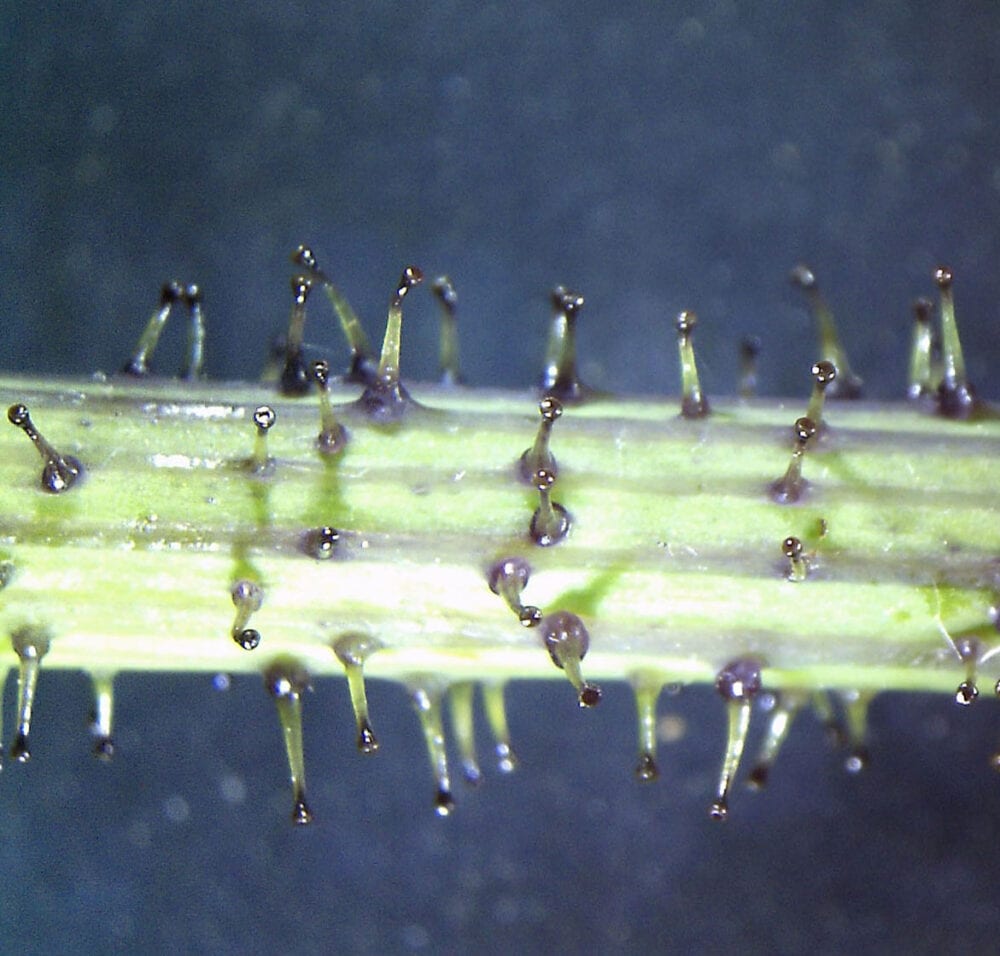


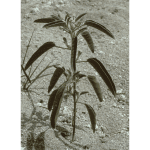
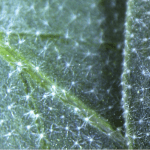
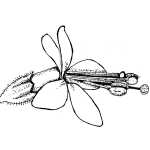
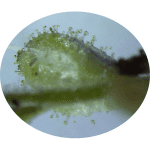
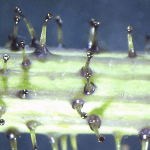
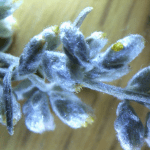
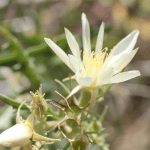
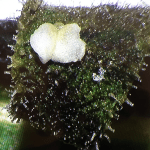
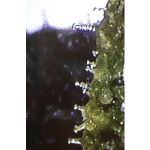
Thank you Terry for this amazing article with different pictures about the hairs called trichomes on the plant and flowers. I now know how some flowers have fragrance for they have The Glandular hair.